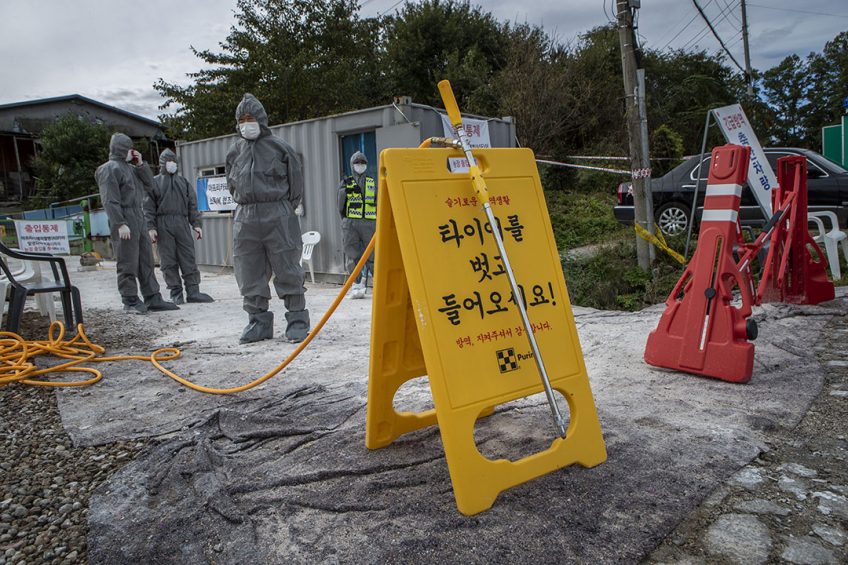ASF South Korea: More farms and wild boar infected

Updates about African Swine Fever (ASF) outbreaks have become relatively sparse from Asia lately – but this week Laos and South Korea have provided updates. In both countries the developments do not give reason for optimism.
South Korea reported 5 new outbreaks to the World Organization for Animal Health (OIE) – again all very close to the border with North Korea. In total the Koreans culled 7,519 animals at these 5 locations – 3 of them had over 2,000 pigs on-site, the largest had 2,800 pigs at the facility.
What is worrisome is that the virus has been found in a dead wild boar as well – at about 2km from the border with North Korea, in the Demilitarised Zone (DMZ). This extended border area is strongly fortified with barbed wire. The animal was found 32km north east of the nearest known farm site infected with ASF. It is hoped that the disease will not become endemic in the country’s wild boar population.
The total count of registered outbreaks in South Korea is now 14, leading to the culling of 23,000 pigs altogether until now. They were found in an area that is 90km wide. Striking is that all locations are within 20km of the border with North Korea, which makes it tempting to believe there must be quite a lot of ASF-related problems going on in the normally very closed North Korea. This country officially only reported 1 minor outbreak to the OIE, near the border with China on May 23.
ASF outbreaks on Laos’ borders
Going somewhat south, also Laos reported 9 new outbreaks at various villages throughout the country. New in these reports is an outbreak in the province Champasack – Laos’ most southern province, which had not reported ASF before. The outbreak was found at 15km from the border with Thailand.
More bad news for Thailand follows from the update from Vientiane Capital as one of the outbreaks in that area literally happened on the shores of the 1km-wide Mekong river, separating Laos from Thailand.
Has ASF entered Thailand?
All in all, ASF virus now appears to be closing in on Thailand. Keeping in mind that mid-September, Thai media reported on the culling of 200 pigs in a 5km radius zone around a farm in northern Chiang Rai province, it appears increasingly likely that Thailand shall not escape ASF outbreaks.
So far, nothing has officially been communicated about the veterinary reason for the culling. Various sources, however, have confirmed independently from each other to Pig Progress that ASF virus indeed has already been found in Thailand.

Read more about pig health in the Pig Progress Health Tool
ASF situation in the Philippines
The exact situation in the Philippines is also difficult to gauge. Outbreaks in Rizal province are still the only official ones reported to the OIE. Philippine sources, including the official Philippine News Agency as well as veterinary author Dr Steven McOrist, mention that the virus has been reported from at least 5 provinces in Luzon island: apart from Rizal, these are Bulacan, Pampanga, Pangasinan and Quezon City.
All the up-to-date information on African Swine Fever and the spread through Europe and Asia
ASF in China: need for heavier pigs
In an attempt to overcome the pork shortage caused by ASF in the Chinese markets, much of the media have reported about a Chinese farm breeding a pig of 500kg, jokingly comparing it to the size of polar bears. While this seems to be a one-off event, as described by press agency Bloomberg, the idea of going to slaughter with heavier pigs is a notion that is shared by smaller and bigger farms alike. Bloomberg mentioned that Wens, Cofco and DBN Group all are trying to increase the average weight of their pigs. At some farms, the average slaughterweight would now be 140kg – against 110kg normally.











